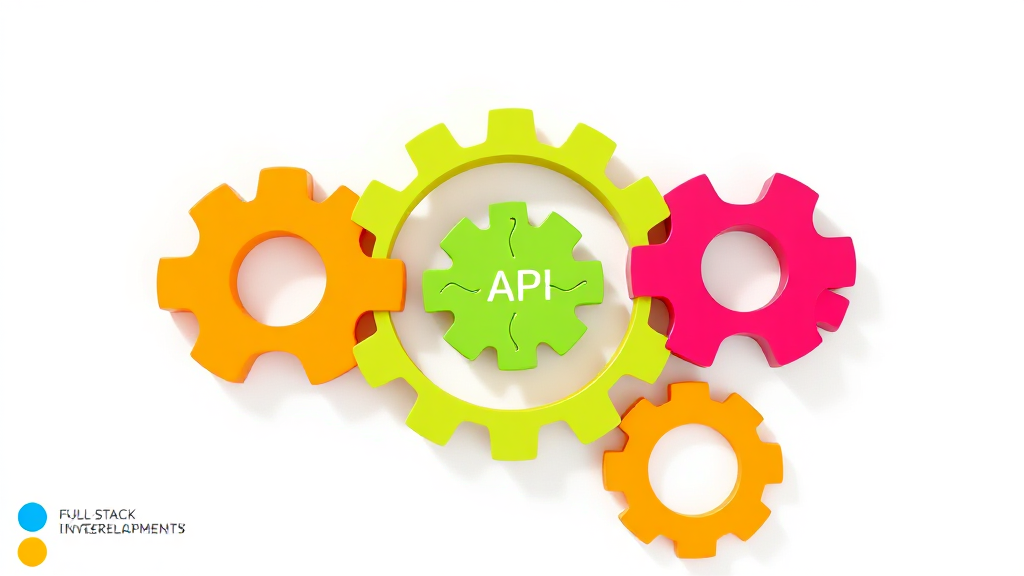End-To-End Development: A Comprehensive Guide For Tech Leaders

For a deeper dive, see our
.
Illustrating the interconnected components of full-stack development, this graphic highlights the importance of teamwork and seamless integration across front-end, back-end, and API systems.
Introduction
In today’s fast-paced digital landscape, businesses are under increasing pressure to innovate, adapt, and deliver high-quality software solutions. For CTOs and tech leaders, the challenge lies in balancing speed, scalability, and quality while managing complex development cycles. This is where end-to-end (E2E) development comes into play—a holistic approach that streamlines processes from concept to deployment. In this article, we’ll explore the intricacies of E2E development, its benefits, and how it can empower your organization to achieve technological excellence.
What Is End-To-End Development?
End-to-end development refers to the practice of managing all stages of software creation, from initial design and development to testing, deployment, and maintenance. This approach ensures that every aspect of the product is cohesive and aligned with business objectives. By integrating cross-functional teams, E2E development fosters collaboration and reduces bottlenecks, ultimately delivering a seamless user experience.
Key Benefits Of End-To-End Development
-
Streamlined Workflow:
E2E development eliminates silos by bringing together developers, designers, testers, and project managers under one umbrella, ensuring a smooth workflow.
-
Enhanced Quality Assurance:
With continuous testing integrated into the development process, bugs are identified early, leading to higher-quality products.
-
Faster Time-to-Market:
By adopting an iterative approach, E2E development accelerates the delivery of functional software, giving businesses a competitive edge.
-
Improved Scalability:
The holistic nature of E2E development makes it easier to scale applications as business needs evolve.
Frontend And Backend Development: The Building Blocks Of E2E
The foundation of any successful software solution lies in its frontend and backend architecture. These two layers work together to create a seamless user experience while managing the complexities of data processing and storage.
Frontend Development
The frontend, or client-side, is responsible for the visual aspects of an application that users interact with directly. This includes everything from the design layout to the functionality of buttons and forms. Key considerations in frontend development include:
-
User Experience (UX):
Ensuring that the interface is intuitive, visually appealing, and responsive across devices.
-
Performance Optimization:
Minimizing load times and ensuring smooth operation, even on low-end devices.
-
Accessibility:
Making sure the application is usable for individuals with disabilities.
Backend Development
The backend, or server-side, handles the data processing, authentication, and communication between the frontend and databases. Critical components of backend development include:
-
Server Management:
Setting up robust servers to handle traffic and ensure uptime.
-
API Integration:
Building APIs that allow different systems to communicate effectively.
-
Security:
Implementing measures to protect sensitive data from cyber threats.
API Development: The Glue That Holds It All Together
Application Programming Interfaces (APIs) are the backbone of modern software development. They enable different systems to interact seamlessly, allowing businesses to integrate third-party services and expand their functionality. Effective API development involves:
-
Designing RESTful APIs:
Ensuring that APIs follow REST principles for consistency and ease of use.
-
Versioning:
Managing API versions to maintain backward compatibility as features evolve.
-
Documentation:
Providing clear documentation so developers can understand and utilize the API effectively.
Scalability And Performance Optimization
As businesses grow, their software solutions must scale accordingly. E2E development emphasizes building scalable systems that can handle increased loads without compromising performance. Key strategies include:
-
Horizontal Scaling:
Adding more servers to distribute workload.
-
Load Balancing:
Distributing traffic evenly across servers to prevent overload.
-
Caching:
Storing frequently accessed data in memory to reduce server load and improve response times.
Security Best Practices In E2E Development
Security is a critical concern in software development, especially with the increasing prevalence of cyberattacks. To safeguard your application:
-
Implement Strong Authentication:
Use multi-factor authentication (MFA) to secure user logins.
-
Encrypt Data:
Protect sensitive information both at rest and in transit.
-
Regular Security Audits:
Conduct routine audits to identify and patch vulnerabilities.
Conclusion
Ready to take the next step?
.
End-to-end development is more than just a buzzword; it’s a strategic approach that empowers businesses to deliver high-quality software solutions efficiently. By adopting E2E practices, tech leaders can streamline their operations, enhance security, and ensure scalability, ultimately driving business success in the digital age.
Whether you’re building a new application or optimizing an existing one, embracing end-to-end development is a surefire way to stay ahead of the competition. Remember, the journey to technological excellence begins with a comprehensive understanding of your development process.
Related Articles
The Essential Role of Full-Stack MLM Developers in Modern Business
Discover how full-stack MLM developers revolutionize modern business with their comprehensive skills in front-end and back-end development, streamlining operati
The Comprehensive Guide to Mobile App Development: Unlocking Business Potential
Unlock your business's full potential with our comprehensive guide to mobile app development. Discover how custom solutions drive growth and innovation through
Elevating Business Efficiency with Custom AI Solutions: EifaSoft's Robotic Programming and Software Development Expertise
Here is a concise and compelling SEO meta description for your blog post: Elevate business efficiency with EifaSoft's custom AI solutions! Discover how our rob